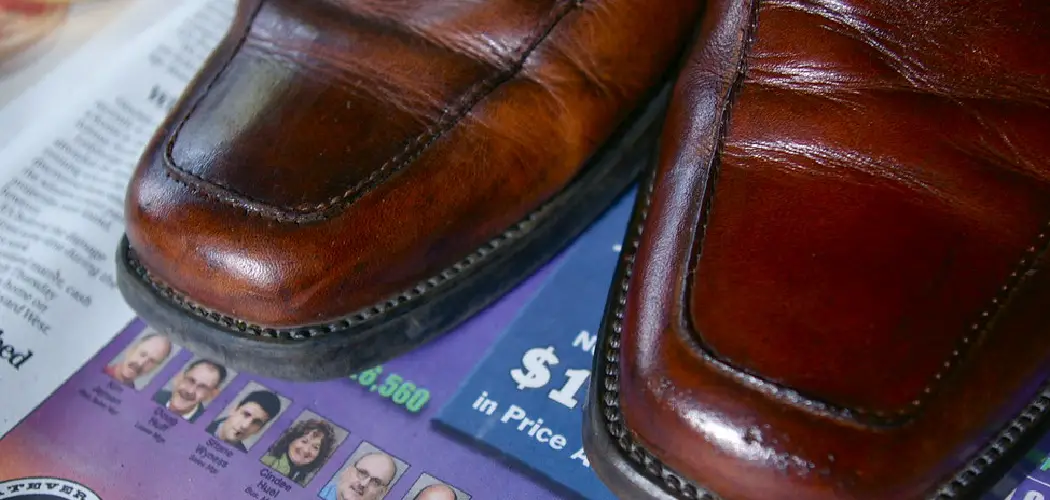Cleaning artificial leather, also known as faux leather, is essential to maintaining its appearance and durability. Unlike genuine leather, artificial leather is made from synthetic materials that can resist stains and are easier to clean. However, it is crucial to use the right techniques and products to avoid damaging the material.
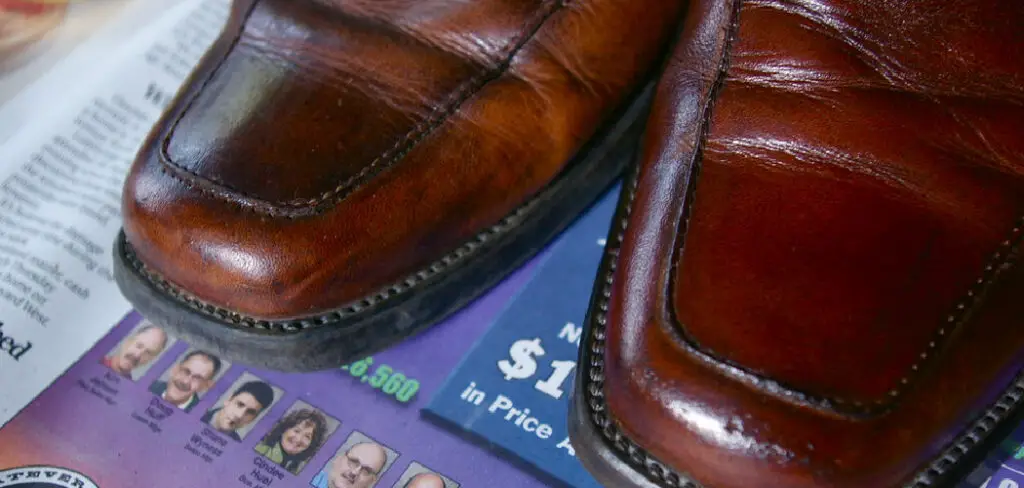
This guide on how to clean artificial leather will walk you through the steps required to properly clean artificial leather, ensuring it remains in pristine condition for years to come. Whether you’re dealing with spills, stains, or just everyday dirt, knowing how to care for your artificial leather items will enhance their longevity and keep them looking as good as new.
Why is Cleaning Artificial Leather Important?
Cleaning artificial leather is essential for maintaining its appearance and prolonging its lifespan. As with any material, dirt, dust, and other particles can accumulate on the surface of artificial leather over time, causing it to look dull and less appealing.
Additionally, spills and stains can also occur, making it necessary to clean them promptly to prevent permanent damage. Regular cleaning not only keeps your artificial leather looking new but it also helps prevent any potential health hazards caused by the buildup of dirt and germs.
What You’ll Need
Before starting the cleaning process, gather all the necessary supplies. These include:
Mild Soap or Detergent:
Opt for a gentle soap or detergent to avoid harsh chemicals that can damage the artificial leather. Avoid using products with bleach or ammonia.
Water:
You’ll need water to dilute the soap and rinse off any residue.
Soft Cloth:
A soft, lint-free cloth is ideal for wiping down artificial leather. Avoid using abrasive materials as they can scratch or damage the surface.
Sponge or Brush:
For tougher stains, you may need a sponge or brush to gently scrub the affected area.
Leather Conditioner:
After cleaning, use a leather conditioner specifically designed for artificial leather to restore its natural shine and protect it from drying out.
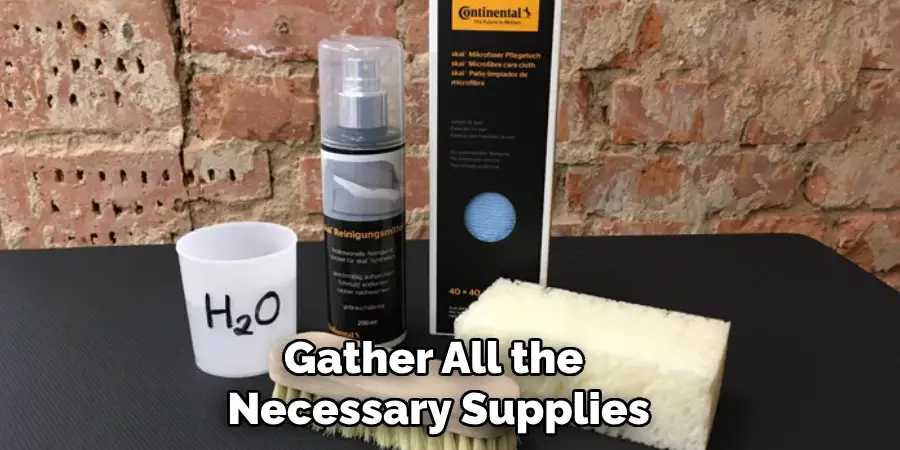
8 Step-by-step Guidelines on How to Clean Artificial Leather
Step 1: Remove Any Dust or Debris
Begin by gently wiping the artificial leather surface with a soft cloth to remove any dust or debris. Make sure to cover all areas, including seams and crevices, where particles can accumulate. This preliminary step is essential to prevent any dirt from being further embedded into the material during the cleaning process.
Regular dusting not only prepares the leather for a deeper clean but also maintains its overall appearance between thorough cleanings.
Step 2: Create a Cleaning Solution
To create a cleaning solution for your artificial leather, mix a small amount of mild soap or detergent with warm water in a bowl or bucket. Aim for a ratio of approximately one teaspoon of soap per quart of water to ensure that the solution remains gentle on the material. Stir the mixture until the soap is dissolved, and the solution becomes sudsy.
This soapy water will be used for cleaning the surface without causing any harm. It’s important to use only a small amount of soap to prevent excess residue, which can lead to a sticky feel or attract more dirt in the future.
Step 3: Test the Solution on a Small Area
Before applying the cleaning solution to the entire artificial leather surface, test it on a small, inconspicuous area first. This step is particularly important if you’re using a new cleaning product or are unsure about how the material will react to the solution. Apply a small amount of the solution onto an unseen area and gently wipe it with a cloth. If there are no adverse effects, proceed with cleaning.
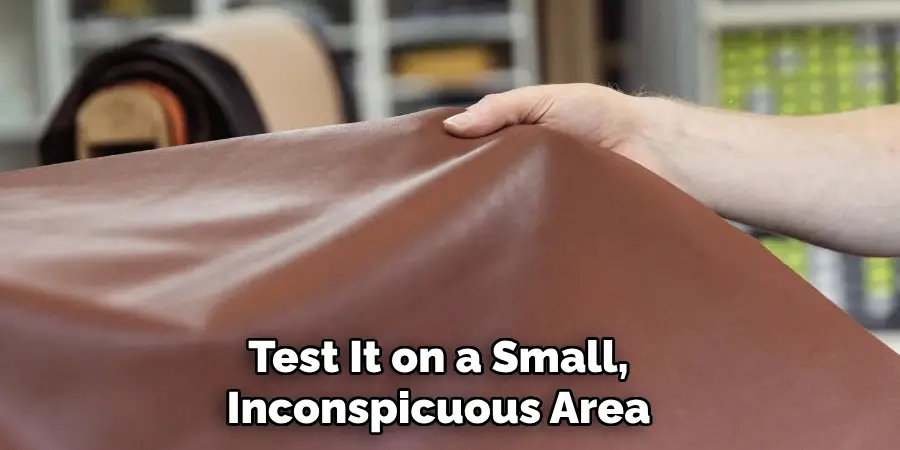
You can also test the solution on a hidden area to check for colorfastness, i.e., whether the color will fade or bleed. If you notice any discoloration, stop cleaning immediately and try a different cleaning method.
Step 4: Clean the Surface
Dip a soft cloth into the cleaning solution and wring it out until it’s damp. Gently wipe down the artificial leather surface in circular motions, making sure to cover all areas evenly. Avoid using too much pressure as this can cause damage to the material. If dealing with tougher stains, use a sponge or brush to gently scrub them away.
Remember always to work in small sections at a time and avoid oversaturating the material with the cleaning solution.
Step 5: Rinse With Clean Water
After cleaning, use a clean, damp cloth to rinse off any soap residue from the surface. Make sure to remove all traces of soap as it can cause discoloration or attract more dirt if left behind.
You may need to change out the water several times during this step to ensure a thorough rinse. The water should run clear when the residue has been completely removed.
Step 6: Dry the Surface
Once you have rinsed off all the soap residue, it’s essential to dry the artificial leather thoroughly to prevent water damage. Use a dry, soft, and lint-free cloth to gently pat the surface, absorbing any excess moisture. Avoid rubbing harshly, as this could damage the material’s finish.
It’s important not to use any direct heat sources, like hair dryers or heaters, to speed up the drying process, as this can cause the material to crack or warp. Instead, allow the item to air dry naturally in a well-ventilated area away from direct sunlight to preserve its integrity and appearance.
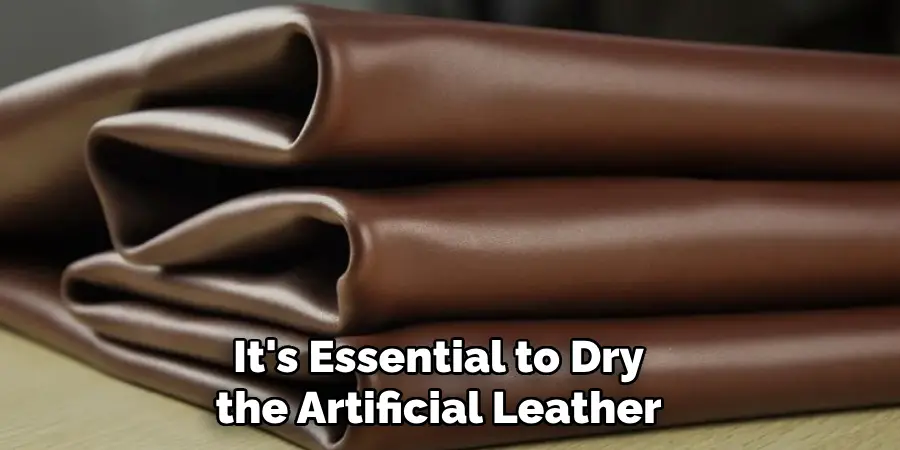
Step 7: Apply a Leather Conditioner
Once the surface is completely dry, apply a leather conditioner specifically designed for artificial leather. Follow the instructions on the product and use a soft cloth to evenly spread it onto the surface. This will rejuvenate and protect the material from drying out, cracking, or fading.
The frequency of conditioning will depend on how often the item is used and its exposure to sunlight, heat, and other elements. As a general rule, it’s recommended to condition artificial leather every three to six months.
Step 8: Store Properly
To prolong the lifespan of your artificial leather item, make sure to store it properly when not in use. Avoid exposing it to direct sunlight or extreme temperatures as they can cause fading or cracking. It’s best to store items in a cool, dry place with good air circulation.
Covering the item with a breathable cloth or storing it in a dust bag can also help protect it from dust and other particles that could accumulate over time.
Following these simple steps on how to clean artificial leather and using gentle, non-abrasive products can help keep your artificial leather looking clean, shiny, and in good condition for years to come.
Additional Tips
Avoid Direct Sunlight:
Prolonged exposure to direct sunlight can cause artificial leather to fade and become brittle over time. Try to keep your items out of direct sunlight or use curtains and blinds to minimize exposure.
Avoid Harsh Chemicals:
Avoid using harsh chemicals, such as bleach or ammonia-based cleaners, on artificial leather as they can damage the material’s protective coating and cause discoloration.
Blot, Don’t Rub:
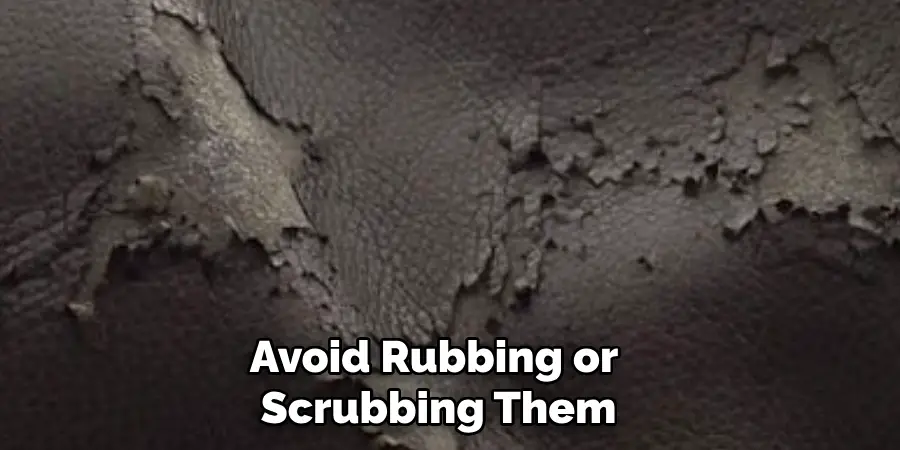
When dealing with spills or stains, avoid rubbing or scrubbing them vigorously as this can spread the stain and cause damage. Instead, gently blot the affected area with a clean cloth to absorb the liquid and then follow the cleaning steps outlined above.
Consider Professional Cleaning:
If you’re unsure about how to clean your artificial leather item or have tough stains that won’t come out, it may be best to seek professional cleaning services. They have the expertise and specialized equipment to handle different types of artificial leather and remove stubborn stains effectively.
Regular Maintenance is Key:
To keep your artificial leather items in good condition, it’s essential to regularly clean and maintain them. This will prevent dirt, dust, and other substances from accumulating on the surface and causing damage over time. Consider scheduling a regular cleaning routineto keep your items looking their best.
Frequently Asked Questions
Q: Can I Use a Regular Soap or Detergent to Clean Artificial Leather?
A: It’s best to use a mild soap or detergent specifically designed for cleaning leather. Regular soaps may contain harsh chemicals that can damage the material. The wrong type of soap can also leave residue or cause discoloration, so it’s always better to use a product made explicitly for leather.
Q: How Often Should I Clean Artificial Leather?
A: The frequency of cleaning will depend on how often the item is used and its exposure to dirt and other elements. As a general rule, it’s recommended to clean artificial leather every one to three months. However, if the item is heavily used or has visible stains, it may require more frequent cleaning.
Q: Can I Use a Brush to Scrub Tough Stains on Artificial Leather?
A: It’s best to avoid using harsh scrubbing tools like brushes as they can damage the material. Instead, try using a soft sponge or cloth and gently scrub the stain in circular motions. You can also use a mild cleaning solution to help loosen tough stains before wiping them away.
Q: Can I Speed Up the Drying Process with a Hair Dryer or Heater?
A: No, it’s not recommended to use direct heat sources to dry artificial leather as it can cause the material to crack or warp. Allow the item to air dry naturally in a well-ventilated area away from direct sunlight for best results.
Conclusion
Maintaining artificial leather is a straightforward process that requires regular care and attention to detail. By following these steps on how to clean artificial leather—carefully dusting, properly cleaning, and conditioning the material—you can effectively preserve the appearance and durability of your artificial leather items. Remember to always test new cleaning solutions on hidden areas first and avoid harsh chemicals that might damage the material.
With proper storage and occasional conditioning, your artificial leather products will remain attractive and functional for years to come.

